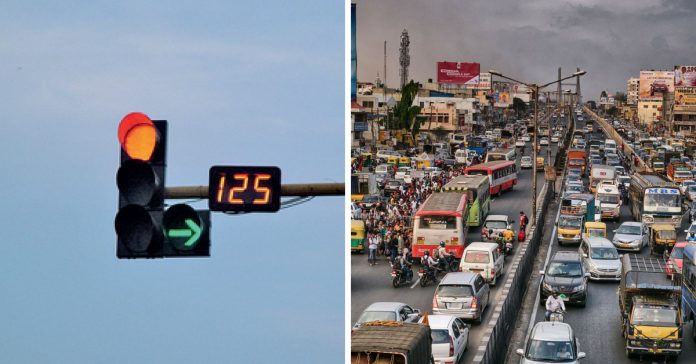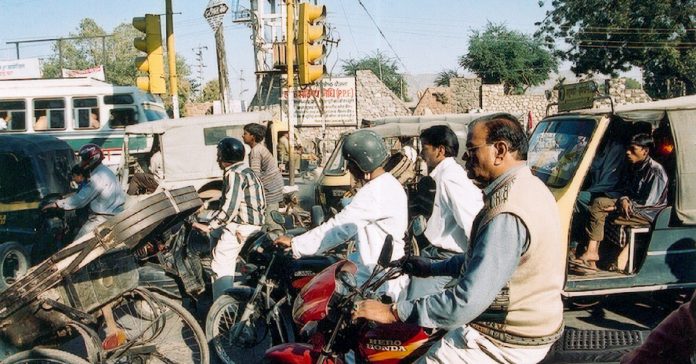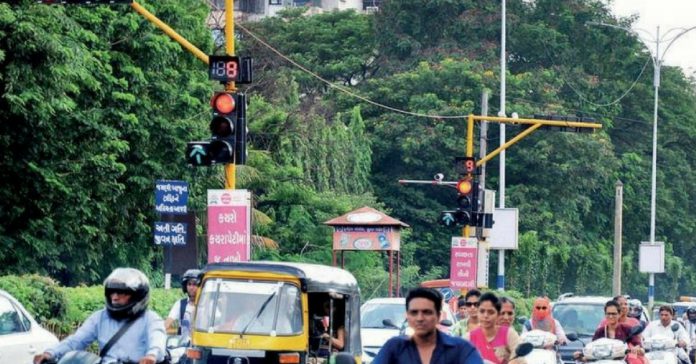
It is observed that waiting time in the traffic signal is adding to the frustration of commuters waiting for no reason. We all have waited in the signals though there are no vehicles moving along the road in a particular junction. Sometimes, this has given rise to unnecessary traffic jams on the road. So, in order to cut waiting time by 30%, automatic signals will be installed in the city with the help of Japanese technology.
JICA to invest about Rs. 72 crore in the Project
The Japan International Cooperation Agency (JICA) is planning to invest a huge amount of money to reduce the waiting time at signals, largely by 30 percent. With this, very soon, we can see a curtail in half a kilometer long queues.
JICA has been active in helping countries in Southeast Asia, like Cambodia, Myanmar, and Thailand to ease the traffic woes. For the very first time, the system of Origin-Destination Related Adaption for Traffic Organisation (MODERATO) is coming to India, straight from Japan.

The Director of Urban Land Transport (DULT) said, “In the present system, the traffic signals installed along the roads have a fixed signal timmer irrespective of the number of vehicles along the roads.” (Source: Bangalore Mirror).
Smart Signals Switch According to the Number of Vehicles
Thanks to Japan. With the installation of Japanese technology, the signals will now automatically change according to the number of vehicles passing along the road in a particular junction.
Simply put, signal works in a way that it gives more signal time for the road that has more vehicles and eventually less signal time for the road that has less number of vehicles.
In this context, it is said that DULT has already identified 29 junctions on MG Road and Hosur Road. The project will kick-start in September 2019 and the plan rightly manages the vehicles and coordinate the signals, including pedestrian crossing.

How It Works
– The Bengaluru Traffic Information Centre (B-TIC) play a major role and will serve as the central nervous system.
– The GPS system on BMTC buses and taxis give information to B-TIC on things like vehicle location, speed and etc.
– Queue length measurement Censors (QMS) installed will analyze the traffic. Automatic traffic classifiers will inform B-TIC about the nature of traffic.
– QMS will be installed along 82 junctions coupled with CCTV cameras which will help in passing the information. These QMS will measure the length and size of the vehicles to analyze the exact number and type of vehicles.

The sensors will be installed for every 50,100 and 150 meters distance on the road which helps in analyzing the actual traffic congestion. The same updates will go to the integrated traffic management center (BBMP, BMTC and Traffic Police).
Also, the variable message signs are said to be installed in the Silk board junction, KR Puram bridge, and Trinity Metro Station. These variable signs will give a display of traffic congestion and estimated traveling time for destinations.
Source: Bangalore Mirror, The Better India.
If you don’t want to miss our next update on Bengaluru then Like and Follow MetroSaga on Facebook or simply download our Android App
You can also Subscribe to MetroSaga for newsletters.


























